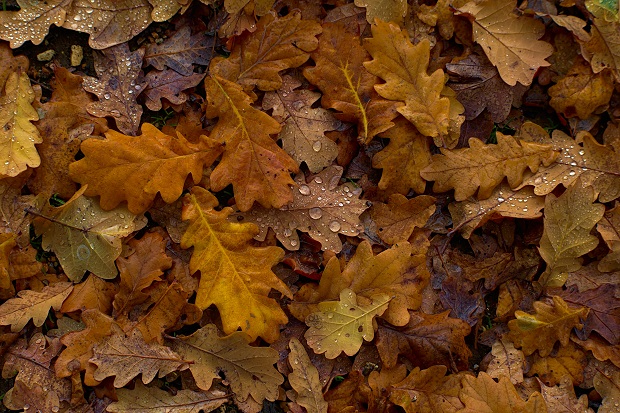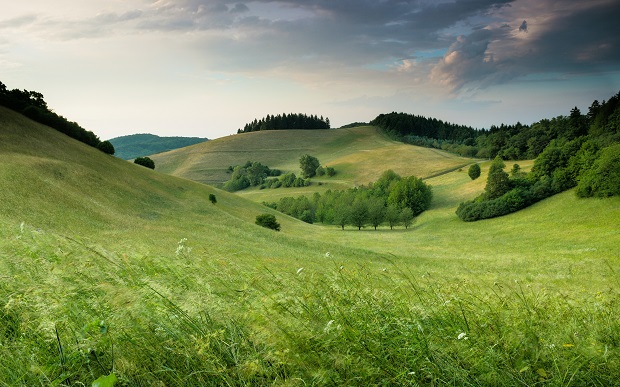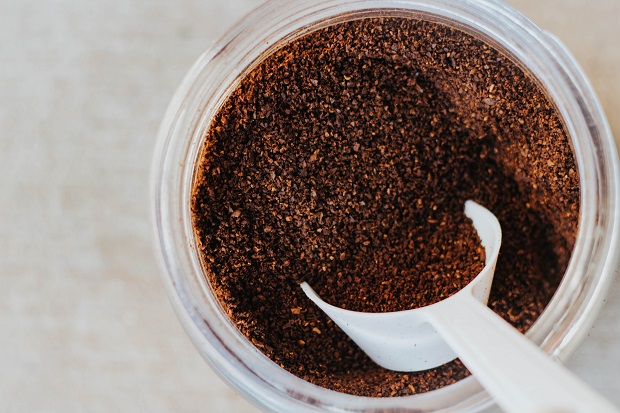In short, yes.
Coffee grounds contain high amounts of nitrogen, an element necessary for plants to thrive and flourish.
How should we best use coffee grounds to ensure the most benefit?
Table of Contents
The Nutrient-Rich Powerhouse
Nitrogen happens to be one part of an important trio known as N-P-K (Nitrogen-Phosphorus-Potassium).
These elements form the backbone of nutrition for most plants. As such, coffee grounds can provide vital nutrients, especially nitrogen, which promotes leafy green growth.
But don’t go dumping your morning joe on your favorite fern just yet.
Balance is key here. While our beloved brew residue has high amounts of benefits, it lacks other minerals like calcium and magnesium that help maintain healthy cell structure within plants.
A Friend to Worms and Microbes
Beyond providing nutritional benefits directly to your greens, composted coffee grounds encourage the growth of beneficial worms and microbes. Studies suggest that earthworms thrive in soil mixed with organic waste materials, including used coffee grounds.
These wigglers then help to aerate the soil and break down organic matter, improving soil structure.
Similarly, friendly microbes also love a caffeine kick.
They consume the compounds in coffee grounds and release even more nutrients for plants to use. This way, you can think of your morning cup as more than an energy booster. It is also a super hero for your garden’s ecosystem.

Benefits of Using Coffee Grounds for Plants
If you’re a coffee lover, chances are you have plenty of leftover coffee grounds. Have you ever thought about utilizing your extra coffee grounds as a nutrient-rich supplement for your plants? Let’s explore why.
1: Nutrient-Rich Supplement
Coffee grounds contain essential nutrients like nitrogen, potassium, and phosphorus, all vital elements that help plants grow healthy and strong. Nitrogen promotes leaf growth while potassium helps in the overall functioning of plant cells. Phosphorous plays a key role in helping roots develop properly.
2: Pest Deterrent
Besides being nutrient-rich, using coffee grounds in your garden could also act as a natural pest deterrent. The caffeine content may deter pests such as slugs and ants who don’t enjoy its taste or smell.
3: Eco-Friendly Fertilizer
Rather than discarding those spent coffee grounds after brewing up your favorite cuppa joe, recycling them into your garden reduces waste making it an eco-friendly choice. You’ll not only give life to more lush greenery but will also contribute positively to our environment by reducing landfill waste.
4: Improves Soil Structure
Studies show that adding organic matter like coffee grounds improves soil structure because they increase drainage capabilities while retaining water at the same time – ideal conditions for many types of plants.
Now before we get carried away sprinkling those magical brown granules on every pot we see let’s remember: balance is key.
5: Use in Moderation
It’s important to understand which plants thrive in acidic soil before adding coffee grounds to the compost. It’s always best to know your plant’s needs before you start showering them with coffee love.
6: Composting Coffee Grounds
Small amounts of grinds can be used as excellent compost. For maximum benefits from coffee grounds as plant food, think about turning them into compost.

Potential Disadvantages to Using Coffee Grounds for Plants
Although coffee grounds can be beneficial, they also come with some drawbacks. It’s essential to understand these potential pitfalls before using them as fertilizer.
Coffee Grounds Can Make Soil Acidic
The first downside is that coffee grounds can make your soil too acidic. Most plants prefer slightly acidic soil, but an overabundance of acidity could harm certain plant types. This might stunt their growth or even kill them off entirely if the pH levels get too low.
To avoid this issue, you should always test your soil’s pH level before applying any coffee ground fertilizers. You can easily get a home testing kit online. If it turns out your garden has alkaline soil (with high pH), adding used coffee grounds may help balance things out instead of causing damage.
Possible Mold Growth on Coffee Grounds
A second concern arises from mold growing on old and dampened coffee grounds – not exactly what we want in our gardens. These molds may potentially harm young seedlings or delicate plants due to their invasive nature and ability to spread rapidly under the right conditions.
But don’t let this scare you away from using those leftover morning brew dregs just yet. Simply allow the spent grinds to dry completely prior to use will reduce chances of mold development significantly.
Nutrient Imbalance Caused by Coffee Grounds
Finally, another possible disadvantage lies within nutrient imbalance caused by excessive application of used coffee ground fertilizer. Although rich in nitrogen which promotes leafy growth, they lack other vital nutrients like phosphorus and potassium which are necessary for blooming and fruiting.
So, if you decide to use coffee grounds in your garden, remember they should only be part of a broader nutrient strategy. Other compost materials or fertilizers might still be needed to ensure plants get all the nutrients they need.
Coffee Grounds Can Repel Beneficial Insects
I’m sorry, but without any text in your input, I can’t provide the rewrite you’re asking for. Could you please share the paragraph that needs to be rewritten?
How to Use Coffee Grounds for Plants
Here’s how to used your fresh grounds to to boost the health of your garden soil.
Collect Your Coffee Grounds
First things first – start collecting your spent coffee grounds. A simple way is by placing an extra container next to your coffee machine. Rinse them off after use and let them dry out before storage.

Composting Coffee Grounds
Coffee grounds are rich in nitrogen, making them a valuable ingredient for composting. Gardener’s Path explains more about the process here. But remember not all plants love acidic soil, so balance it with brown compost materials like leaves or straw.
Applying Directly To Soil
If you prefer direct application instead of composting, that works too. Sprinkle used coffee grounds around plants before watering or gently mix into the top layer of soil.
A Word Of Caution…
Note: Although using spent ground as fertilizer sounds appealing because it recycles waste and provides nutrients to plants at no cost, there might be some risks involved if overused since they’re highly acidic. Make sure not to go overboard.
The Right Amount
- For small indoor potted plants (e.g., succulents), sprinkle approximately one teaspoon every two weeks.
- For larger outdoor plants (e.g., rose bushes), apply roughly a quarter to half cup every month.
- For vegetable gardens, mix up to 5 pounds per 100 square feet of soil once each season.
Step 4: Observe and Adjust
Alright, here’s the kicker – the final step is all about your plants. Watch them like a hawk after you’ve sprinkled on those coffee grounds. Notice any changes in their health?
What Types of Plants Benefit from Coffee Grounds?
Let’s get straight to the point – coffee grounds can be a plant’s best friend. But, not all plants are coffee lovers. So which ones are? Let’s find out.
Azaleas and Rhododendrons
If you’ve ever wondered how to make your azaleas pop or your rhododendrons rock, consider sprinkling them with used coffee grounds. Both these plants love acidic soil, and that’s exactly what they’ll get. Acid-loving plants like azaleas and rhododendrons can greatly benefit from an occasional caffeine boost.
Roses
Coffee is also a rose’s secret weapon. Yes, those stunning blooms in your garden might just perk up even more with some leftover morning joe mixed into their dirt. Roses thrive when there is plenty of nitrogen in the soil – something abundant in coffee grounds.
Fruit trees and berries
You may have heard old-timers swear by using coffee on their fruit trees and berry bushes – well it turns out they were onto something. Apple trees, blueberry bushes and other fruits appreciate a good dose of acidity too.
Are Coffee Grounds Good for Tomato Plants?
Like all plants, tomatoes have certain nutritional requirements that must be provided to allow them to grow well. When used right, coffee grounds can be beneficial for tomato growers and tomato seeds.
Used Ground Coffee can Help Tomato Plants:
- Spread compact dirt and promote drainage.
- Grab helpful earthworms for your garden.
- Their decomposing organic material enriches the soil.
- May prevent tomato illnesses.
Dive Deeper: Are coffee grounds good for tomato plants?
Are Coffee Grounds Good for Pepper Plants?
Coffee grounds are a great thing to add to the soil of your pepper plants because they add important nutrients and improve the soil’s structure.
Nitrogen is an essential element that pepper plants love, and coffee grounds are full of it.
You should use coffee grounds on your pepper trees. Nitrogen is an important plant nutrient that can give your peppers the boost they need. But there is a right way and a wrong way to use coffee grounds. You don’t want to just throw your leftover grounds from the morning into the yard.
Read the full study: Are Coffee Grounds Good for Pepper Plants?
Are Coffee Grounds Good for Roses?
Yes they are.
Coffee grounds add nitrogen, calcium, and magnesium to acidic soil, which roses need. These nutrients are good for your roses’ health and help them grow beautiful blooms.
Benefits of Coffee Grounds for Roses:
- Nitrogen: For strong growth, roses need nitrogen. Since coffee grounds are high in nitrogen (about 2%), they can be added to your standard rose fertilizer.
- Organic Material: Not only do they provide nutrients, but by adding organic material, they also improve the structure and richness of the soil.
- Soil pH Balance: Coffee grounds contain a pH level of 6.5 to 6.8, which makes them acidic. Acid-loving plants including roses do well in soil with a pH of 6.5 to 6.8.
Deep dive: Are Coffee Grounds Good for Roses?
Are Coffee Grounds Good for Grass?
In short, yes. Grinds are heavily packed with nitrogen which boosts the growth of lush green grass. They are also filled with potassium and phosphorus, which are essential for plants to thrive.
Research that was released in the Journal of Environmental Management showed that utilizing coffee grounds that have been used as compost material may significantly enhance the structure and fertility of the soil.
Learn more: Are Coffee Grounds Good for Grass?
FAQ’s
What plants do not like coffee grounds?
Ferns, asparagus ferns, and some flowering plants such as geraniums or petunias aren’t big fans of coffee grounds. They prefer less acidic soil.
Can I put coffee grounds directly on plant soil?
Sure can. Just sprinkle the used coffee grounds around your plants to improve the soil structure and add a nutrient boost.
Do you just sprinkle coffee grounds around plants?
Precisely. Sprinkling them lightly over the topsoil is enough. But remember to water afterward for best results.
When should I add coffee grounds to my plants?
Add them during planting or at times when you’re refreshing potting mix – they’ll give your green buddies a pick-me-up.
Conclusion
So, are coffee grounds good for plants? Absolutely, but with a touch of caution.
Coffee grounds can be magic for some plants, offering numerous benefits such as improving soil structure and fertility. They also add vital nutrients like nitrogen that boost plant growth.
But remember: not all plants dig the caffeine buzz. Some thrive on it while others might suffer. Know your greens before you start spreading those brown granules!
The secret is in using them right – moderation is key! Overdoing it could lead to potential disadvantages like stunted growth or even harmful fungal diseases.
In short, when used wisely and appropriately, coffee grounds can indeed give your garden a rich cup of health!
